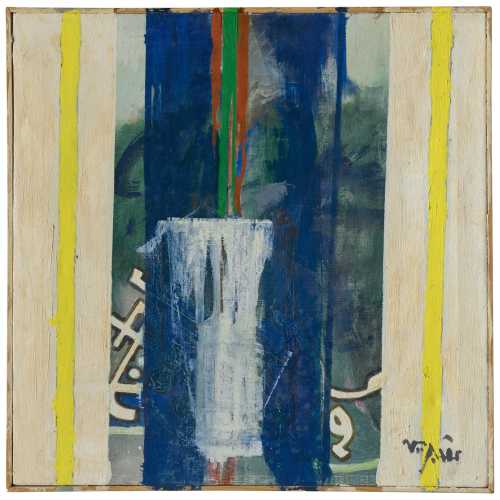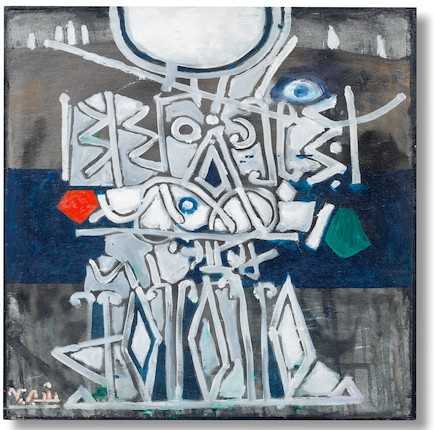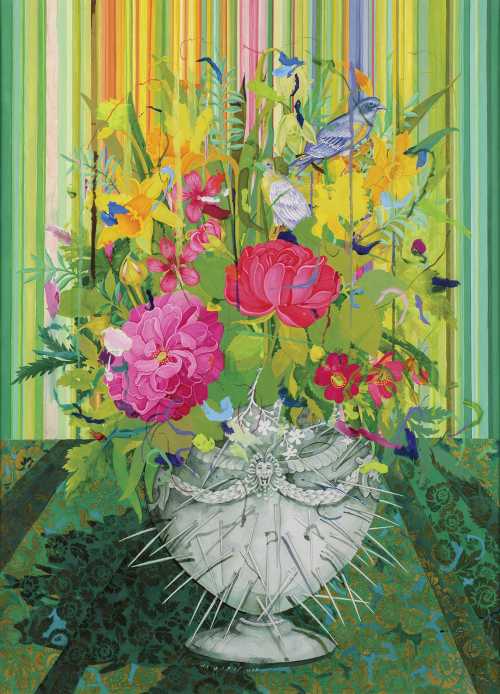- Untitled 1998
- Oil on canvas
- Painting
- 70 * 70 cm
- signed in Arabic (lower right)
20 October 2021
Estimation
£12,000
16,579 USD
-
£16,000
22,106 USD
Unsold
Artwork Description
The Khartoum School, the key modernist art movement in Sudan, was co-founded in 1960 by Ahmed Shibrain alongside fellow artists Ibrahim El-Salahi (B.1930) and Kamala Ishag (B.1939), who together pioneered unique styles that reflected a confluence of African, Arab and Islamic influence, capturing the identity of the newly-formed nation of Sudan. Although the group disbanded in 1975, they created the foundations to exciting, new trends in blending linguistics, culture and abstraction - embarking on a spirit that continues to influence contemporary artists today.
In reflecting upon and producing works based on Sudanese cultural diversity, these practices came to be known as Sudanawiyya employed by many artists during that time. Shibrain embarked on a technique called hurufiyya to incorporate calligraphy into his paintings, a name which stems from the word huruf meaning Arabic letters. These appear in his compositions without commanding them but echo elements of formal meanings which lend to their mysterious and striking qualities.
In reflecting upon and producing works based on Sudanese cultural diversity, these practices came to be known as Sudanawiyya employed by many artists during that time. Shibrain embarked on a technique called hurufiyya to incorporate calligraphy into his paintings, a name which stems from the word huruf meaning Arabic letters. These appear in his compositions without commanding them but echo elements of formal meanings which lend to their mysterious and striking qualities.
More lots by Ahmed Shibrain
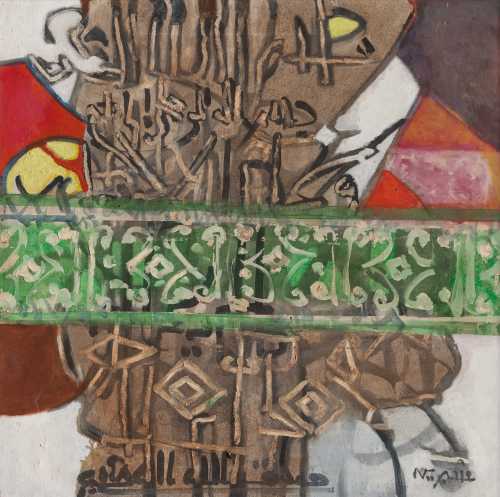
Untitled
Estimation
£10,000
13,816 USD
-
£15,000
20,724 USD
Realized Price
£8,750
12,089 USD
30%
Sale Date
Christie's
-
20 October 2021
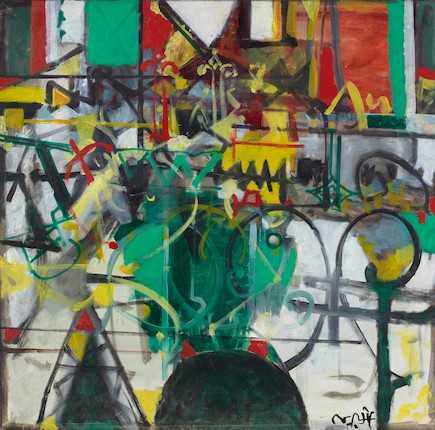
The Festival
Estimation
£8,000
10,151 USD
-
£12,000
15,227 USD
Sale Date
Bonhams
-
5 June 2024
Realized Price
12,412 USD
Min Estimate
11,882 USD
Max Estimate
17,824 USD
Average Artwork Worth
-13.8%
Average Growth of Artwork Worth
Sales Performance Against Estimates
Average & Median Sold Lot Value
2019 - 2023
Performance vs. Estimate
2019 - 2023
Sell-through Rate
2019 - 2023
Similar Artworks

Prey
Estimation
$1,800
-
$2,500
Sale Date
Artsy Auction
-
2 May 2025
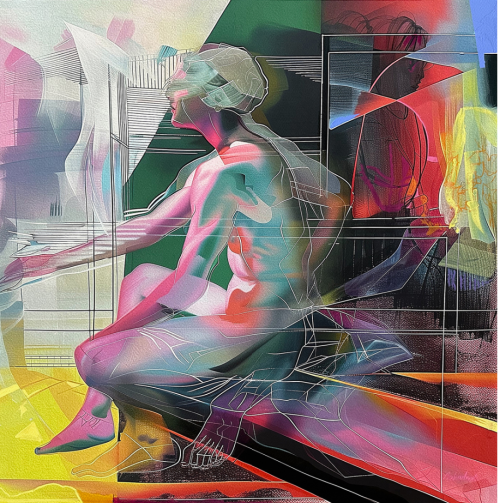
Tracked and Traced
Estimation
$1,800
-
$2,500
Sale Date
Artsy Auction
-
2 May 2025
